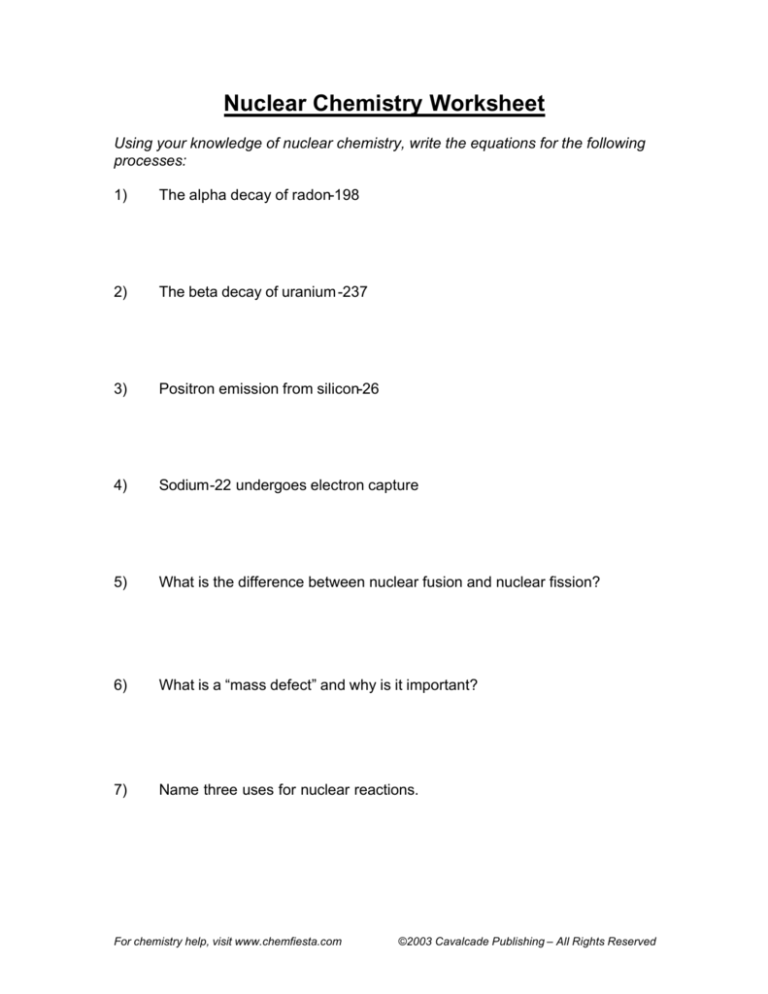
Nuclear Chemistry Worksheet
Using your knowledge of nuclear chemistry, write the equations for the following
processes:
1)
The alpha decay of radon-198
2)
The beta decay of uranium -237
3)
Positron emission from silicon-26
4)
Sodium-22 undergoes electron capture
5)
What is the difference between nuclear fusion and nuclear fission?
6)
What is a “mass defect” and why is it important?
7)
Name three uses for nuclear reactions.
For chemistry help, visit www.chemfiesta.com
©2003 Cavalcade Publishing – All Rights Reserved
Nuclear Chemistry Worksheet – Solutions
Using your knowledge of nuclear chemistry, write the equations for the following
processes:
1)
The alpha decay of radon-198
198
86
2)
Rn → 24 He +194
84 Po
The beta decay of uranium -237
U → −01 e+ 237
93 Np
237
92
3)
Positron emission from silicon-26
26
14
4)
Sodium-22 undergoes electron capture
22
11
5)
Si →1326Al + +10e
22
Na+ −01 e→10
Ne
What is the difference between nuclear fusion and nuclear fission?
In nuclear fusion, small nuclei are combined to form a larger nucleus
– this process releases a very large amount of energy, and is the
main source of energy in the sun. In nuclear fission, large nuclei
break apart to form smaller ones, releasing a large amount of energy.
Fission is used in nuclear power plants to generate energy.
6)
What is a “mass defect” and why is it important?
“Mass defect” refers to the difference between the mass of the
nucleons (protons + neutrons) in a nucleus when weighed separately
and the mass of the nucleus when it’s put together. This difference
is important because this missing mass is converted to energy using
E=mc2 that’s used to hold the nucleus together.
7)
Name three uses for nuclear reactions.
•
•
•
Nuclear weapons
Medicine
Nuclear power generation
For chemistry help, visit www.chemfiesta.com
©2003 Cavalcade Publishing – All Rights Reserved









